 I have a unique relationship with food. I’m not known for my culinary skills nor my nutritional knowledge. As I look back at my childhood and early education, I often wonder if I missed an essential nutritional class in school, or maybe if my parents just didn’t care or know enough about nutrition to pass along the basics.
I have a unique relationship with food. I’m not known for my culinary skills nor my nutritional knowledge. As I look back at my childhood and early education, I often wonder if I missed an essential nutritional class in school, or maybe if my parents just didn’t care or know enough about nutrition to pass along the basics.
The reason I say this is because I hear friends talk about nutrition, often using words that have no meaning to me but are part of a common vernacular relating to nutrition – a language that everyone else but me speaks.
As a result of this lack of skill and knowledge, I have come to realize that I approach food as a transaction. While I am not a robot and can appreciate an appetizing meal, most of the time I approach food as a means to an end. The majority of the time, food is not something from which I intentionally seek satisfaction.
Instead, I’m looking for something that fills me up and that is easy to eat (another weird quirk). Now, coming to grips with my lack of nutritional knowledge means that I’ve started to focus on this as well. I know that I should be eating a balanced diet and so forth, but again, it’s just another criterion in the means to the end.
As a result, our food expenses is one area of our spending to which I have not given a lot of intentional thought. I’ve allocated my mental energy to other areas of my life. As a result, our food spending has naturally inflated over time.
As part of our journey to Financial Independence (FI), we are looking to find ways to shorten the time to reach FI. There are a lot of different strategies and tips to make that happen, but all of these ideas fall into two groups. Increase your income or reduce your expenses. Those are your two options, and they don’t have to be mutually exclusive. If you are serious like we are, you might even try them both.
Today we’re focusing on reducing our food expenses. It’s something that we’ve tried to accomplish a few times over the past 10 years, but we’ve never been that serious about it, and as a result (as you might imagine), we’ve never made a dent in our rather large food budget.
While we are more committed this time around, we also came up with a unique challenge that has subverted all of the hidden scripts that we’ve slowly bought into over the years that has allowed us to see some drastic cuts to our food spending. Before I get into our results, let’s first give you an inside look at why food has been on our minds lately.
Why are We Saving Money on Food?
Before we get into what we are doing to reduce our food expenses and practical tips on what you can take and apply to your own life, I thought we would start with the WHY. In other words, why we are focusing on reducing our food costs, and why now. Here are the three biggest reasons that help explain why this is the logical first step.
1 – It’s a Problem Area for us
According to the United States Department of Agriculture, the monthly cost of food for a two-adult family per month should range from $385 – $764. The USDA offers four levels of spending, ranging from thrifty to liberal and we spend more than all of them. We may have prevented some lifestyle inflation over the most recent years, but one area that we have been more liberal with our spending is food.
Over the past several years, our food expenses have slowly increased. It started small, but our spending had slowly gotten out of hand. First, it was takeout on Friday nights, then it was buying our lunch during the week, and then finally it was eating out whenever we wanted. We found ourselves paying for convenience and justifying the spending because “we work so hard”.
Regardless of the reason, we’ve come to realize that this is a waste. The amount of money that we spend is not worth the value that we receive from it and it’s time to fix this hole in our wallets.
To give you a sense of how bad it had become, below is a snapshot into our most recent 6 months of spending on food. For the 6 months before making any of these changes outlined in this post, here’s what we spent on food, broken out between groceries and eating out:
| Food Category | Monthly Average | 6 Month Total |
|---|---|---|
| Groceries | $750.00 | $4,500 |
| Restaurants / Eating Out | $383 | $2,300 |
| Total | $1,133 | $6,800 |
As you can see in the table above, our monthly expenses for food was more than double what the USDA recommends for a low-cost food plan. We were spending more than the highest food plan for a family of four.
To make a long story short, we’ve come back to reality and have decided to do finally something about it. And the first step in that is admitting you have a problem.
Hi, we’re the Fioneers and we have a food spending problem…
2 – We Don’t Receive the Appropriate Level of Return for our Food Spending
Now, it’s an important point to make that comparing your spending to a national average or a federal agency’s recommended budget can be a silly exercise. In other words, why should I let an arbitrary number tell me whether or not I should be cutting back on a part of my budget? If a random person walked up to you and said that you are spending more than a recommended amount, odds are that you would laugh at the absurdity this exchange.
The same would be true of our comparison to the USDA’s food spending plans IF we were receiving the return (in the form of value or happiness) from the money that we are spending or investing each month. But that’s the thing – we’re not receiving what we consider the appropriate return for the amount of money that we are spending.
Note – For some people good food and the experience associated with it brings them a tremendous amount of happiness. For us that isn’t the case, when we’ve gone to the fanciest restaurant in our neighborhood for a 5-course tasting menu with wine pairings, we left thinking it was pretty good, but not worth the cost. We also have a friend who is a chef – he tends to make more elaborate meals at home (and plate them beautifully), while this is not as expensive as going out. He buys more expensive food because it brings him joy. We know this about ourselves – we don’t seek out the Michelin star restaurant; we know that we will be just as happy with a $20 meal or a home-made meal from home. If we did value this, we might choose to make tradeoffs somewhere else.
Therefore, it’s a necessary clarification to make that another reason we are focusing on this is that we are not receiving the appropriate level of return for the investment in food each month.
And because of this, it hopefully gives more context to why the USDA food spending plan mentioned above is so helpful. We’re approaching it with the understanding that our spending does not line up with our values, and using an external benchmark to validate that our spending is way beyond what is normal.
3 – We’re Focusing on the Big Wins First
Beyond identifying that this is a problem and that we are not receiving an appropriate return of happiness for the money that we are spending, we’ve also begun to realize the untapped potential. Another reason why we are focusing on lowering our food costs is that we are looking to shorten the time to reach FI, and we are looking for big wins first.
As we embark on this journey to financial independence, it’s best to focus on the items that will make the most significant impact on our savings rate, and ultimately the time it takes to reach financial independence.
We could obsess over a small lifestyle change like not going to the movies anymore (when we only go 3-4x per year), or we could use our time to make the most significant impact on our expenses.
The choice seems obvious. Food for us, because of our current spending habits, and the potential to lower our spending, is one of those areas that could have a significant impact on our journey to financial independence.
The three most significant expenses for most families in the U.S. are Housing, Transportation, and Food. We’re not ready to make any (more) drastic changes with either Housing or Transportation (and we are reasonably optimized in our current situation in these areas), so we thought we could start with food.
If you are also like me, you may want to see the potential laid out in numbers.
Based on my quick calculations, if we could save an additional $500 per month from here on out, we could not only lower the amount we need to save to reach FI by $150,000 – $171,000, but also shorten our time period to FI by about 1.5 years of our already aggressive goal of 9-10 years.
That is tremendous potential impact and was enough motivation to get us to re-think how we spent money on food.
Our Monthly Food Challenge – Targeting $3.50 per Meal
Because we needed a kick in the A$$ to change our spending habits, we decided to set an audacious goal to cut our food spending. We also set up our goal in a way that would force us to think differently about our spending habits and provide us with a new perspective to find ways to save money.
While we did not know how this would play out, as I mentioned above, the results have been astounding. Sometimes all you need to accomplish a goal is to come at things a little differently, especially if you intend to subvert the hidden scripts that you’ve convinced yourselves over the years.
After returning from vacation (Yes, we spent time on vacation, planning how we’d get to FI faster) and identifying food as a significant focus of ours, we decided to set a target of spending an average of $3.50 per meal per person throughout the entire month.
Why We are Focusing on per Meal per Person and Why $3.50
Before I get into the exact parameters of this food challenge that we set for ourselves and the results, I thought it would be helpful to walk you through the reasons that led us to set this target.
Let me start by saying that thinking about food costs in the average cost per meal is an entirely new concept for me. As someone who had budgeted for many years, I typically think about my household costs for any spending category in monthly totals. Not per unit costs.
I had no idea what our average spending on per meal per person basis was before we set this challenge. Thankfully I had the numbers (as presented in the spreadsheet above) to be able to do this calculation. And for those of you who are interested, our average cost per meal per person was $6.30.
As we’ve been listening and reading other resources on financial independence, we’ve come to see two commonalities in those who have paved this path before us. The first shared element when it comes to food costs is that many of the early Fioneers have said that they think of costs in this incremental, per meal per person cost.
Again, this initially opened my mind up to a new way of thinking about food expenses, and I think there’s a lot of value in approaching it this way. While I didn’t realize it initially, I like using this per meal per person measurements for a few reasons:
- Small enough Indicator to provide precise feedback – It used to be that when we overspent on our food expenses, we couldn’t pinpoint the reason (besides maybe eating out too much). Now, when we spend too much on our food, I can tell you precisely what meal and how much above our average cost.
- It provides immediate feedback – We also can see the results immediately. By tracking our food costs in this way, we can see the costs immediately and identify the problems right then and there. If you are looking to change a behavior, you need immediate feedback.
- Helps Identify Trends – As a result of paying attention to this metric, we have begun to identify trends. I’ll speak to more of these trends and takeaways later in the post, but it’s proven to be insightful.
Additionally, you may be wondering how we identified $3.50 as our target. While there was an element of picking a random place to start, there were two pieces of information that helped inform our target. The first is our starting point and how big of a dent we wanted to play. We knew how much we were currently spending (again, after doing the calculations).
The second reason is that many of the early Fioneers have said not only that they think of food costs in this incremental, per meal per person cost, but also that they try to keep their food expenses to $2 per meal per person. While we’d like to follow in their footsteps, this seemed like too aggressive of a goal to be realistic for us. We wanted to make changes to our food spending, but we also wanted to set a realistic goal that we could then improve upon moving forward.
As we reduce our costs, we can find a happy balance of expenses and value.
How Did We Do?
Now that we have shared the background on how and why we set the target, I’m happy to share how we measured up against our target. Throughout the month, we tracked all of our meals in a spreadsheet so that we would be able to calculate our average. Thankfully, we also categorized our meals so that I could provide this neat summary:
| Average Cost Per Meal Per Person | $3.24 |
| Without eating out | $2.40 |
| Breakfast Average | $1.88 |
| Lunch Average | $1.91 |
| Dinner Average | $5.82 |
| Jess Average | $3.76 |
| Corey Average | $2.80 |
As you can see, we were able to spend less than our target. We averaged $3.24 per meal per person. This is a huge victory for us, almost cutting our food costs in half the first month.
Observations from our Monthly Food Challenge
I think the best part about this challenge is that we also learned a lot about minimizing our costs. Before I share some general strategies for minimizing food costs, I thought I would share some general observations.
1 – We ate out (or got takeout) 3 times during the month and it added up.
This isn’t that bad for us, especially compared to our previous spending. In the month before this challenge, we ate out over 10 times in one month. As you can see in the table above, it increased our average cost per meal per person almost a whole dollar (from $2.40 to $3.24). It doesn’t take a rocket scientist to know that eating out is expensive, but this new metric put it in a new light.
2 – It is much easier to eat less expensive food for breakfast and lunch than dinner.
This was a massive breakthrough for us. Initially, we were worried that we were going to be able to hit the $3.50 target that we set for ourselves. However, then we realized that it was an average. By reducing our costs on breakfast and lunch, we could lower our average and could afford to have almost an almost $6 average cost for each dinner per person.
I was able to engineer a majority of my lunches from $0.51 to $1.01, which is a huge reason why my monthly average is lower than Jess’. Note – it’s not a competition, but just insightful to see the difference. Jess is gluten free and cannot eat an (affordable) sandwich for lunch.
3 – Getting a Good Price for Meat Can Make a Huge Difference
As we did the calculations per meal, we became aware of some items that would make a huge difference in our cost per meal. For example, we have two recipes that are very similar. A new recipe that is a Jerk Chicken with Pineapple Black Bean Salsa ($3.57), and Cashew Chicken ($5.08) that we’ve been making for some time. Both involve rice and both involve chicken, with a few other odds and ends to differentiate themselves, but as you can see, $1.51 difference in price between the two.
Now, part of it is that cashews are expensive, but the main reason is that we used chicken breasts from our regular grocery which are more expensive than thighs from Costco. For those curious, here’s another look at our Jerk Chicken w/ Pineapple Black Bean Salsa meal that we found on Budget Bytes. (Side Note – BudgetBytes.com is a great resource for recipes, but we found the portions to be too small for accurate estimates of per person per meal.)

4 – Some Foods are Cheaper to Buy in Bulk (by a lot!)
We’ve been Costco members for many years now. This challenge forced us to pay attention to the better deals, as we tried to lower the cost of our average meal per person. We’ve only been paying attention for a couple of months now, but we’ve begun to identify which foods to buy in bulk. Of course, the key consideration to keep in balance is that you have to be able to eat it all before it goes bad.
Items that save you a lot of money to buy in bulk:
- Peanut Butter
- Bread
- Hamburger Buns
- Protein powder
- Rice
- Eggs
- Jam/Jelly
- Meat
- Shredded cheese
- Condiments
- Frozen Berries
- Seasoning
- Pre-made pizza crusts
Feel free to find your happy balance. We’ll write more about buying food in bulk in future posts, but suffice it to say that we went to the extreme in some cases, as can be evident in one of our purchases.
We bought a 25-pound bag of rice for $9.89. In the past, we would typically buy a 1 pound bag of rice for $3.99. The rice from Costco comes out to be about 1/6th of the cost per serving. We’re also not worried about it going bad because there’s a couple of years before that happens – especially with this container. (For those of you who are interested, even with this one-time purchase of the container, we still come out ahead on the rice)

5 – We Began to Compare Similar Foods with Each Other
We had never compared the cost of one food with another before this challenge. But, as we were seeking a nice balance between value added to our lives and cost, we found ourselves doing that more often during this challenge. It started with dinner but then moved to all meals. I already mentioned Cashew Chicken vs Jerk Chicken.
I also started comparing PB&J sandwiches ($0.51) to meat & cheese sandwiches ($1.30) and tuna sandwiches ($1.65). It’s not that I won’t eat those more expensive sandwiches anymore, but because there’s not a vast difference between the two in value, I will tend to eat more PB&J’s going forward.
Most Effective Ways to Save Money on Food
While I am not an expert (yet), there are many strategies for lowering food costs that are valuable for many others. If you are trying to lower your costs, feel free to find which one of these make sense for you.
1 – Focus on Not Wasting Food
I didn’t write a lot about this, but as we began to calculate the per meal per person costs, we had to calculate how many times we would use an ingredient for each package. If we didn’t use all of the food, it would increase our per meal costs. We used to waste so much food, but now we’ve reduced the amount of food we are throwing out to a minimum.
2 – Start with Finding Food in Your Kitchen to Make Meals
This tip goes hand in hand with the first, but instead of starting with what you want to eat, look at what you have in your kitchen to create meals from. This not only ensures you waste less food, but it effectively lowers the cost of the meal.
3 – Create a weekly meal plan
Another way to save money on food is to create a meal plan. We do this on a weekly basis to keep it manageable. The nice benefit about this is that it reduces the odds of the last-minute takeout orders. You know the feeling: you get home from a long day at work and are exhausted. You don’t know what you want to make, and don’t have the energy to think about it, so what do you do? You order from your favorite takeout place around the corner.
We have a friend who meal plans and grocery shops for two weeks at a time, which cuts down on her food costs even more, because she can be more intentional about buying in bulk, and uses frozen or canned vegetables toward the end of the two weeks that are cheaper than fresh. This helps them save a lot of money on food. We haven’t tried this yet but might start.
4 – Plan for leftovers
I know there are some who hate eating leftovers. I don’t understand this at all. Not only does it save you time, but it also allows for saving some money. Start small – instead of making a meal for one night, try two. You don’t have to eat the same thing over and over again, but give yourself one more time.
5 – Limit Your Portions
When we started looking at some websites that were geared toward keeping costs low, we were amazed at how small the recommended portions were. Don’t confuse this one with thinking you need to skimp on calories. Instead, avoid over-eating. There are times that I would overeat and regret it. If you limit your portions ahead of time, it’s an excellent way to keep yourself honest.
6 – Identify & Buy (certain) Food in Bulk
There are some HUGE savings just from this strategy alone. It takes practically no time and can provide enormous savings for you. See my notes in the observations section above for which foods we buy a regular basis to save us a lot of money on food.
For those of you who learned ways to save money on food, what advice or feedback do you have for us?





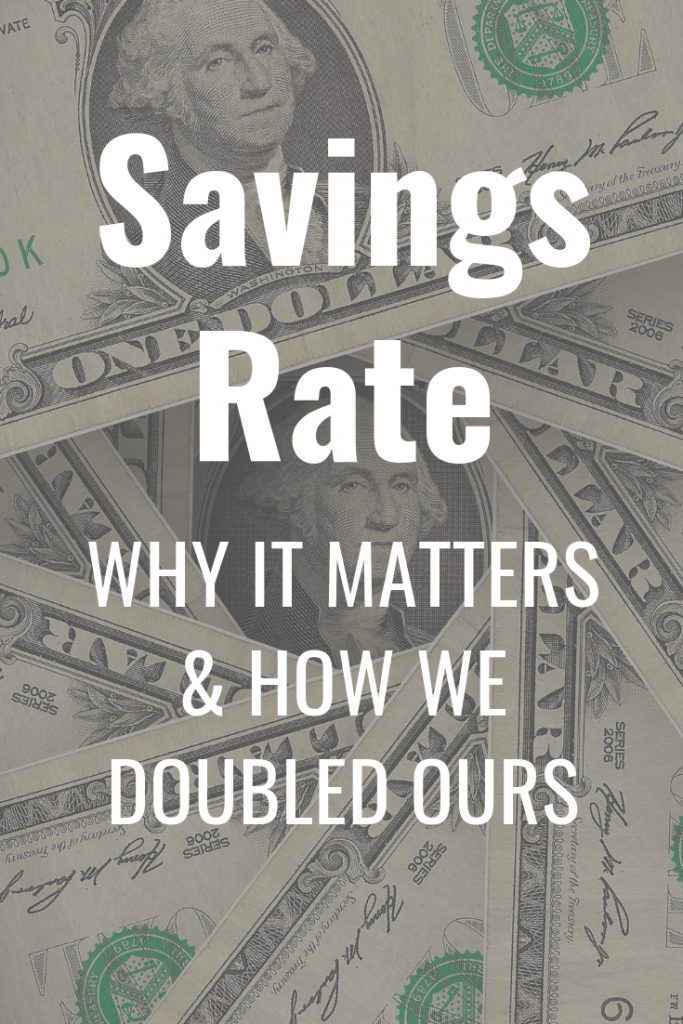

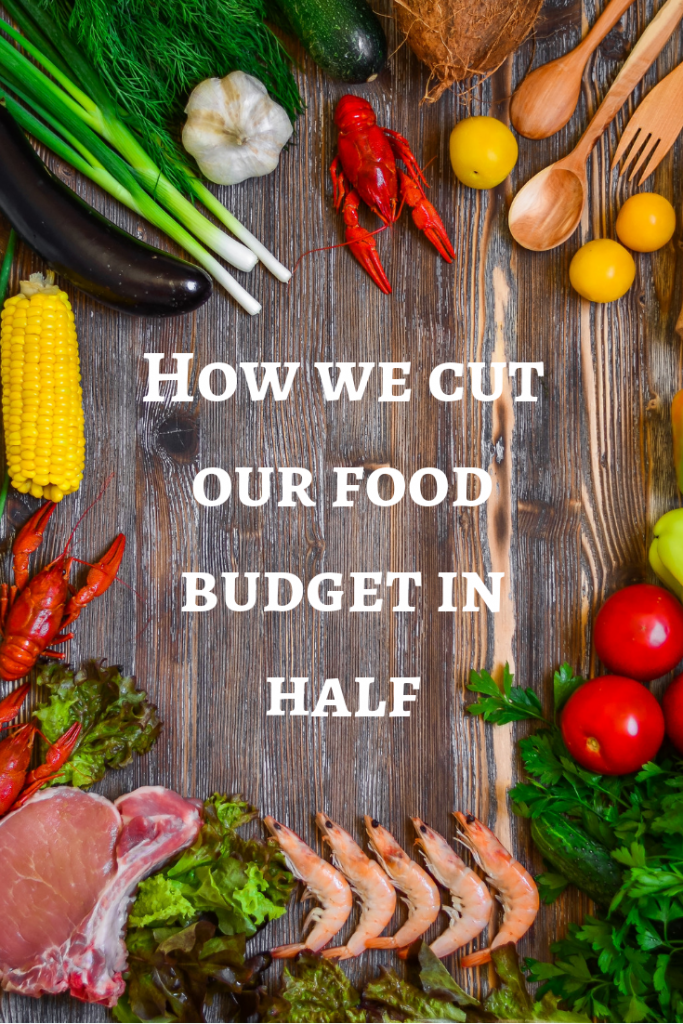



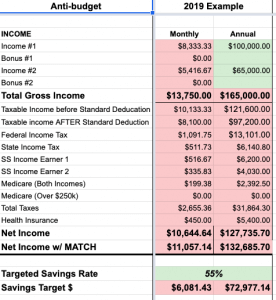

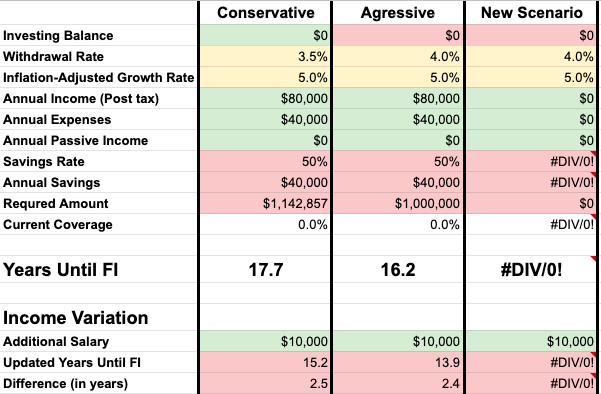
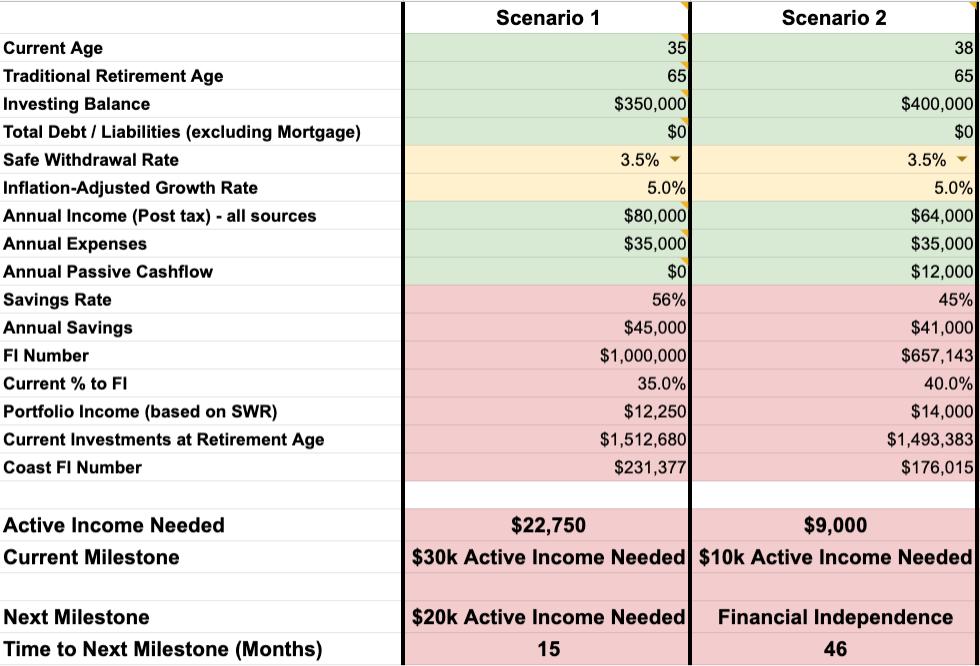
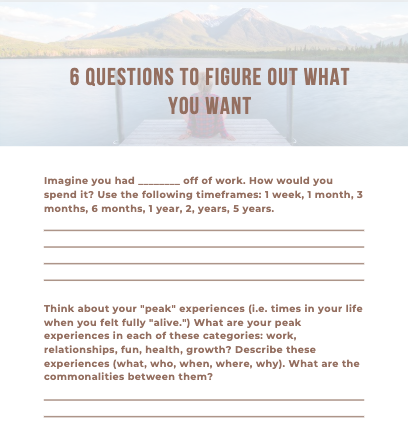

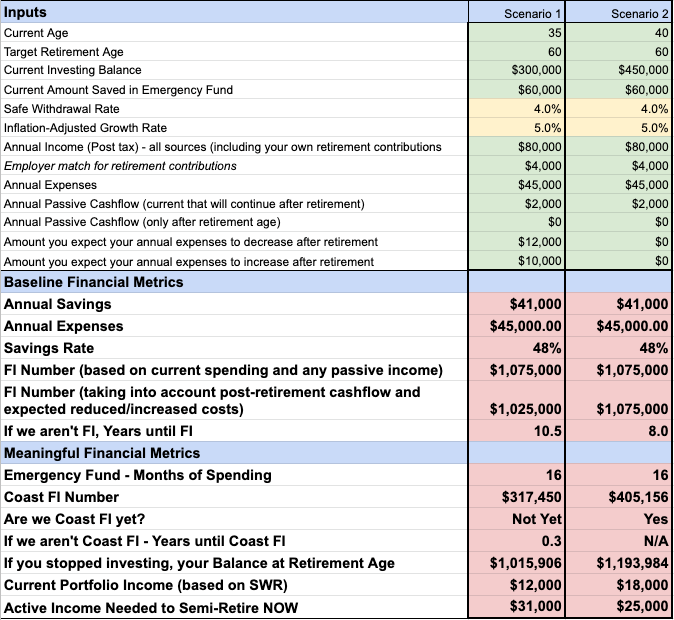
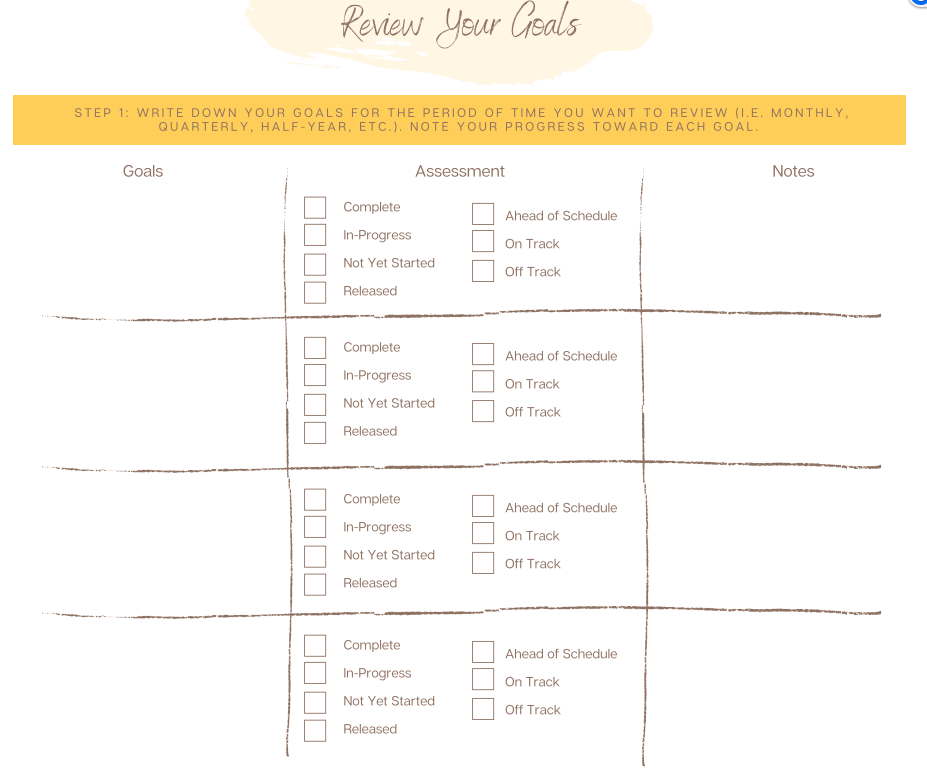
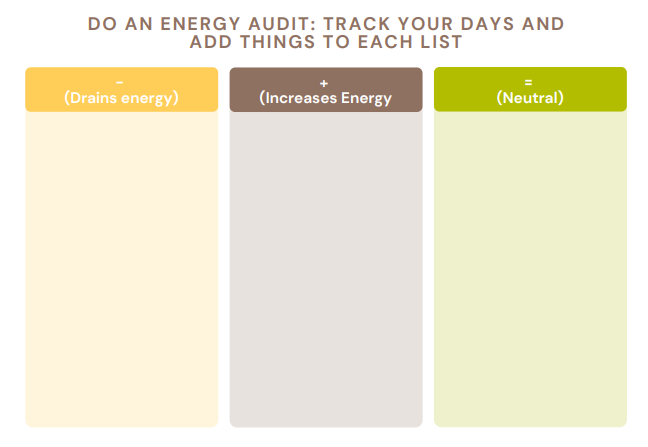

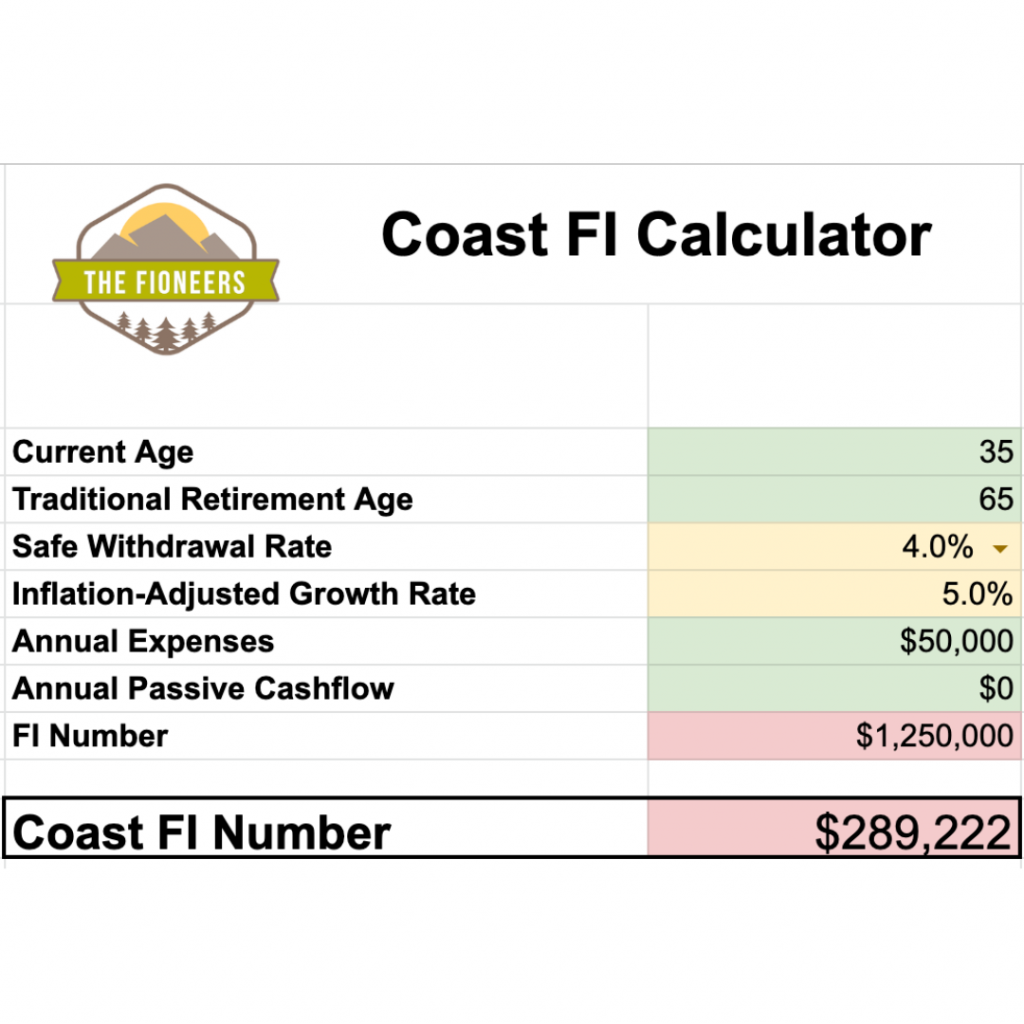



I really enjoyed this article! You’ve made me think about something from a different perspective. We have always budgeted from a total cost per month but I’m going to give the cost per meal a shot. Looking forward to this experiment.
Hi Pete,
I’m happy to hear the article was helpful for you. This practice transformed the way we think about our food spending. I will admit it was a lot of work, but I also don’t think it’s something we have to do forever. After we tracked our food spending this way for about 6-7 weeks, we realized that we now knew how much things cost (and we made additional adjustments based on our learnings – i.e. also buying Chicken Breast at Costco, additional things in bulk, doing better at not forgetting to buy ingredients, etc.). Therefore, we felt like we were able to stop the intensive tracking (and have been able to keep up a consistently lower food budget since we did this in July/August). I would consider doing this again every six months or so as a “tune-up” to make sure we are continuing with our good habits.
I wish you luck! Even though it’s time-consuming, it’s worth it. I hope you learn as much as we did. After your experiment, I’d love to hear what you learn!
Thanks,
Jessica (aka Mrs. Fioneer)
Well, that didn’t go well. The past 3 months we’re still spending a ton according to Quicken. Which is so odd since we’re eating more correct portions and throwing out basically zero food. Sigh. Always things to improve I suppose, but this is one we appear to be stuck on. The struggle is real!
Hi Pete, I’m sorry to hear that, but you are right – there are always things to improve.
Do you have a sense of what caused you to spend so much? Were you tracking your spending per meal and monitoring your progress throughout the 3 months? We found it helpful to monitor our average cost per meal as we went along. A few other ideas: Is it possible that your expenses are pre-paid, covering your food/groceries for the future as well? Also, are you actually spending a lot, or does it just seem like a lot to you? For example, did you compare yourselves to the USDA’s recommended spending amounts?
After digging around some more and doing more comparisons from the same months in different years, I think there was some of the timing of when groceries were purchased versus actually used, and also just some oddities I haven’t quite figured out. The data sample is short as well since we really got thinking about it in December or a little later.
All in all, it appears it may be down a touch (only about $75 per month) but is still oddly high for two people. However, it’s possible we just value certain foods higher than I thought we did as well.
I just found it mostly amusing that I made a post a while back and then after seeing your response recently I figured, hey, I should check on this.
Big picture going from saving 24% of gross to at least 34.4% of gross, and nearly all of that into roth or taxable accounts now as well, we’re in good shape. Now I need to figure if this homemade bread is saving us money. It probably is and it definitely is delicious.
Hi Pete,
That’s great to hear! Congrats on increasing your savings rate so much.
Our food spending is still quite high compared to many in the FIRE community. Many people shoot for $2/meal, which is just too low for us. I have a gluten allergy, and we like to eat a healthy balanced diet with a lot of vegetables. We realized that this is something that we value, and while we definitely had room for improvement, we don’t need to push a grocery spending to a level that makes us feel unhealthy and to not eat food we enjoy.
I wish you the best luck in finding the right balance for you,
Jessica
Do you have aw link for your rice storage container?
Hi Sandra,
We got it at the container store. Here is the link: https://www.containerstore.com/s/tellfresh-large-airtight-superstorers/d?productId=10033438&q=large%20food%20storage
I’m glad you enjoyed the post!
Jessica (aka Mrs. Fioneer)
I would absolutely substitute the cheapest available boneless chicken in either of those recipes.
Do you ever buy whole chickens? I love Costco rotisserie chickens, which are often about the same price as raw chickens and taste so much better than my homecooked attempts. We get at least three meals out of them. Day one (while it’s hot) we eat our favorite parts, day two (and sometimes day three or four) we use shredded chicken on tacos or pasta or whatever. After that we make stock out of the carcass. Sometimes the stock becomes chicken soup, but often we use it to add flavor and nutrition to rice or beans or mashed potatoes.
Julie,
Thank you so much for the comment! Yes, we always substitute boneless chicken in every recipe. Ain’t nobody got time for bones… 🙂
We haven’t tried the rotisserie chicken from Costco, but that sounds like a great idea. We love easy meals, and if they are inexpensive, that’s all the better. Since we live in a city, our nearest Costco is about 30 minutes away, so we usually only go to costco every 4-6 weeks. This sounds like a great idea for the week of the Costco run.
Thanks again,
Jessica (aka Mrs. Fioneer)
Great post! And great job on the savings. You are right when you say that getting meat for a good price makes a huge difference. We used to get the typical tray of chicken breasts and now we mix it up with chicken legs. The kids like them better and it’s much cheaper. Teh idea of the Costco chicken is great. Or even buying the whole chicken can help with a couple of meals.
We are a family of 6. We have four kids. Usually, when we cook a whole chicken it lasts easily for two meals, and if we get ambitious we also use the carcass plus some vegetables to make soup. From that, you also get easily a couple of meals. If you guys are only two you may have to freeze some 🙂
We are always hovering at $600-650. I asked my wife to see if we could bring it down and she just gave me the look. We haven’t touched the subject again, LOL
She really does a good job keeping things under budget.
Loved the post. Good job!
That’s great! $600-$650 is fantastic. We’re around $400/month on groceries for just the two of us, so you are doing something right. AND we’re obviously down significantly from where we used to be!
Thanks! We’re hoping we can figure out even more in the future to bring it down while still enjoying life!
Thanks,
Jessica
Great article. I’ll be including a link to it in a post I’m writing. I’ll let you know when it goes up.
Thank you Susie! Yes, please let us know when it goes up!
Love the in-depth analysis from the month “challenge” of tracking you did. There’s so much insight to gain about how to cut down on costs and boost savings just by paying some more attention and refusing to go on auto-pilot. One suggestion I have that you likely have already given some thought to is figuring out how to replace certain ingredients based on what’s in season or on sale during a certain time of year. Either that or basing your meals off of whatever is on sale. While some staples will likely always have a standard cost month on month, always be looking out to change up your meals based on what you can get the cheapest in any given trip to the grocery store / Costco. You did a version of this on your analysis with your two different chicken recipes!
Kevin
Hi Kevin,
Great suggestion. Actually, since writing this, we’ve started getting “imperfect” produce through misfits market every other week. We get about 15 lbs of produce for ~$17, and we’ve started meal planning around what we get. It’s actually made meal planning a lot easier. I’m not sure if we are saving more money on food, but we are definitely eating healthier. It also feels nice to know that we’re contributing to there being less food waste in the world.
I’d definitely recommend services like this for cheap, tasty produce.
Thanks,
Jessica
This is awesome! I didn’t even know such a thing existed, so I’ll definitely be looking into it. It’s right up my alley of just making food with whatever I can find in the kitchen at the time!
Best,
Kevin 🙂
Hi Corey, Jessica,
Great guide on cutting down on food costs. I have a couple of suggestions to add:
– cook in bulk. Saucy foods like curries and stews can keep for a week or more if stored correctly. And the flavor has had more time to mellow and mingle when you reheat so it actually tastes better. This can cut down on food cost as well as energy.
– rice stores better in an opaque container as light does not do it good. Not a pressing issue since that container is not too big. Just saying if you upgrade to a bigger one.
We store ours in a metal tub.
Hey!
Thanks for the tip. We tend to cook meals that will have 1-2 nights of leftovers but not much longer than that. This is definitely something to consider.
Good to know on the rice. We do keep the tub in a dark closet in our spare bedroom, so I think we’re okay on that one for now.
Thank you for the tips!
Jessica
I’ve learned the trick of prepping a second dish (or third) while making the first. I’ll then freeze it uncooked for a quick meal another day. Essentially leftovers but not. We also went vegetarian a year ago (for health), and that has made a huge budget difference.
Excellent article! Very eye opening and helpful! I already found several of your ideas to be very helpful! Thanks for doing the leg work and sharing!
You’re welcome! I’m so glad you found it helpful.
HI guys,
I’d say knowing prices is another great strategy. Just another day my regular bulk laundry detergent was $27 for per gallon. Now, I saw another one on sale for $10. I bought it. Same with groceries, but need to know prices, as some prices at some stores are higher even while on sale, than the other stores’ regular price. Costco is typically good, but watch out per piece or per lb price, as some packaging is deceiving. Lately I have noticed small or tiny packages on sale are cheaper (combined by weight) than one large one. Weird phenomenon, but true.
I grocery shop once every 2 weeks to save on money and time.
I buy chicken in bulk at costco, then cut off the meat parts and freeze them separately, and freeze the skeleton separately. Then make chicken stock or chicken soups from chicken skeleton. Much cheaper than buying bones separate and meat separate.
Dry legumes are much cheaper than cans (+ much less garbage). Soak overnight, then cook.
Spice blends are mostly salt/pepper dust and residual spice dust… If you buy individual ingredients (whole) in bulk and grind, mix your own spice mix – much cheaper and is way more fragrant.